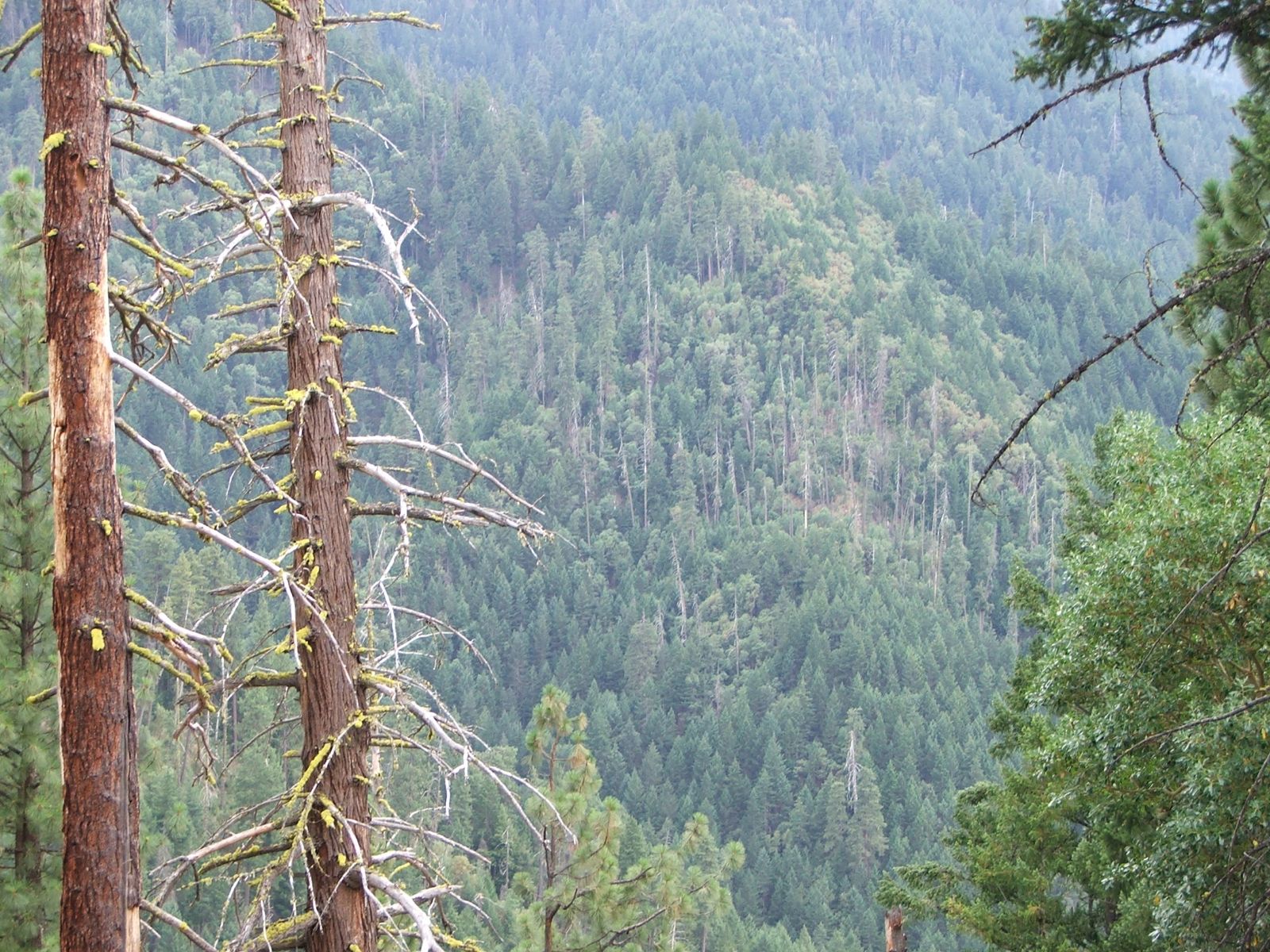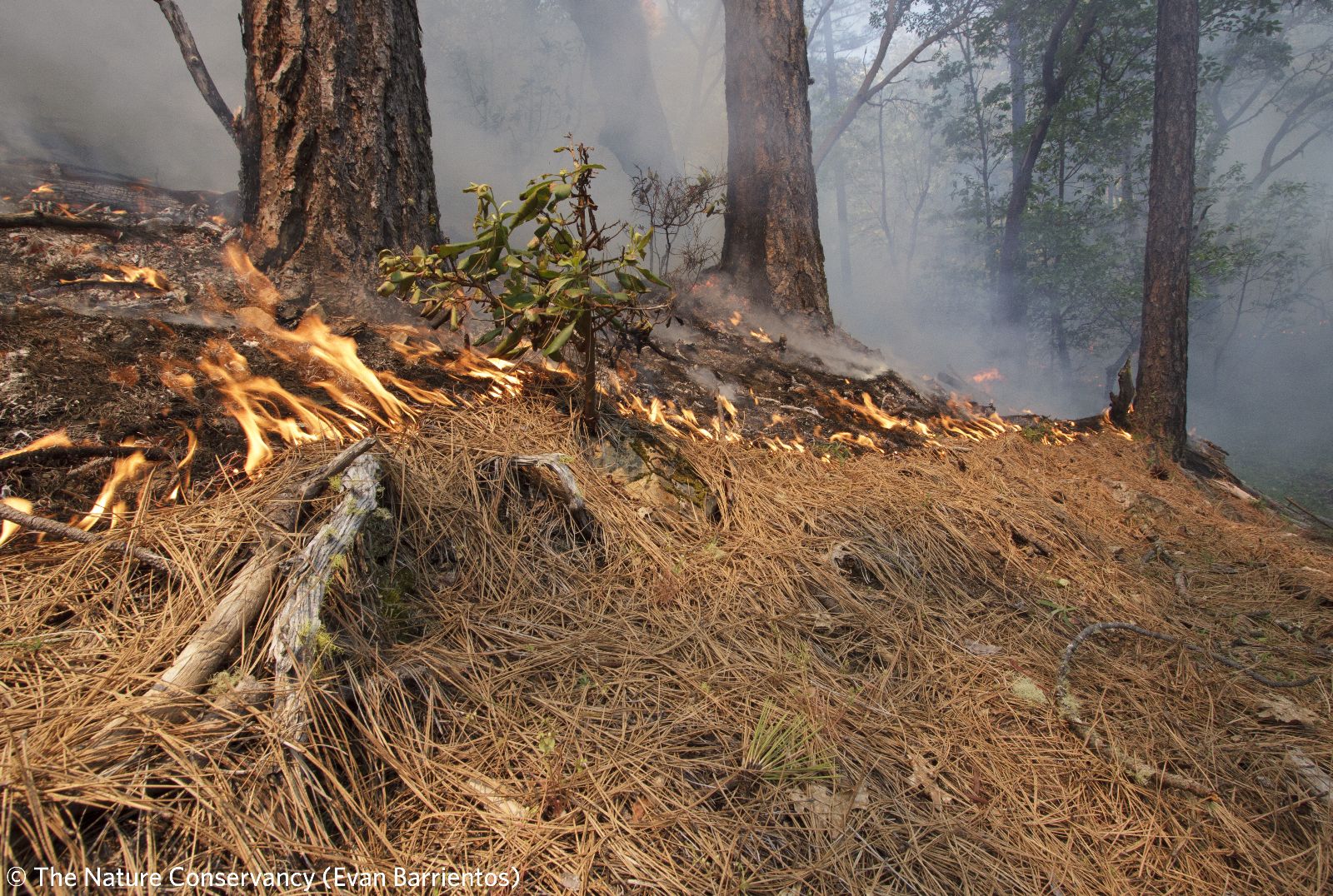Why We Burn
Our Fire Prone Region
.JPG)
For over a millennia, fire shaped and maintained healthy forests in Southern Oregon. Lightning and humans set ground-hugging, beneficial fires, “good fire”, which maintained dry, open forests in a patchwork with moist, dense forests which survived repeated fires. Across the hills above Ashland, The Nature Conservancy and US Forest Service scientists found abundant trees with multiple fire scars— surviving 7 fires on average and up to 28 fires during their lifetime. The record reveals that fire burned somewhere in the Ashland watershed every-other year. Any patch of forest had a fire revisit almost every decade.
A Century of Fire Suppression

In the Ashland watershed, seedlings have grown unchecked among the larger trees—the legacies of frequent fire. Absent fire, young Douglas-fir and white fir packed in, and shaded out the bunchgrass and wildflower carpet, adding competition and stress on the legacy trees, now dying at accelerated rates. Burning in dense forest, a wildfire is prone to climb up through ladder fuels into the canopy and spread in unusually large patches of severe fire, killing even the fire-resistant legacy trees. Severe fire poses unnecessary risks not only to forest and wildlife, but to the city water supply, recreation, homes and businesses.
A Better Way Forward

Forest thinning and fuel reduction go a long way to re-establish desired forest conditions. It reduces the risk of severe wildfire, promotes forest resilience in the face of climate change, and sets the stage for the return of needed fire. Once treated, these forests vastly improve prospects for effective fire management, and open the curtain on the next act, bringing back good fire. AFR scientists and land managers will increase the use of controlled burns to restore and maintain forests and a more natural, beneficial fire regime.
Returning Good Fire

Controlled underburns are planned with required safety precautions in place, and lit by fire workers during carefully selected and monitored conditions. A burn plan and “prescription” sets out the conditions which allow fire to consume litter, leaves and branches, to kill seedlings and saplings, while protecting larger trees and soils. Fire managers select weather that will send smoke away from nearby sensitive communities as much as possible. In contrast, severe wildfires during the heat of summer can be devastating for nature and people, and the smoke can be dense and prolonged, impacting human health, our day to day life, and our economy. By tolerating some smoke, for short periods, and during favorable weather, we choose the desired and long term solution to the challenging wildfire dilemma. Bringing back “good fire” is good for forests, our economy, and a better choice for our health, the health of our children and future generations.